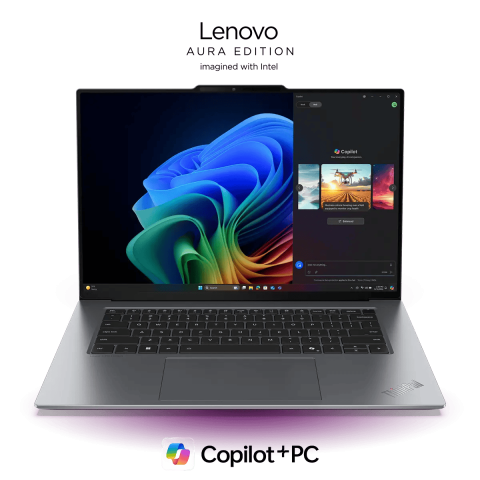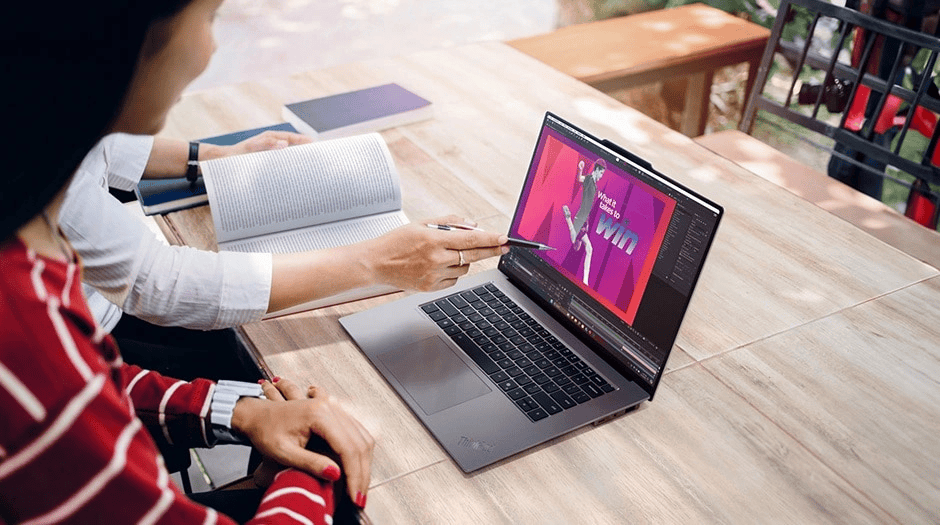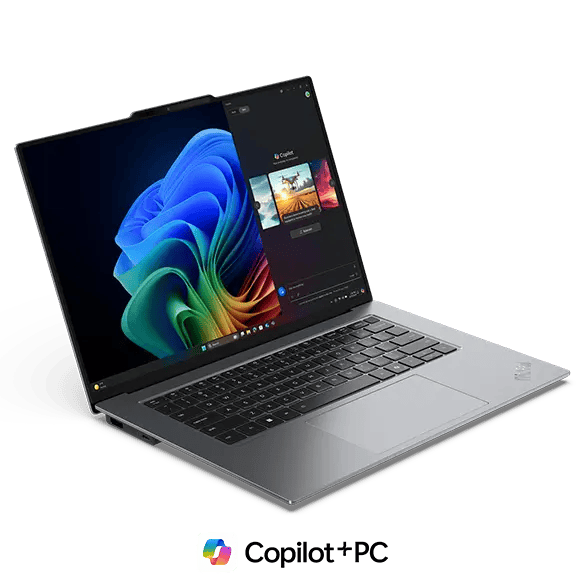Lenovo ThinkPad X9 15 Aura Edition: A Premium AI-Driven Business Laptop Designed for the New Era of Mobility
In the increasingly competitive market of business ultraportables, Lenovo has introduced a striking contender: the ThinkPad X9 15 Aura Edition. Aimed squarely at professionals who demand premium hardware with intelligent features, the X9 15 emerges as a compelling Windows-based alternative to Apple’s MacBook Air 15 and Microsoft’s Surface Laptop 15. With an OLED display that dazzles, next-gen Intel Lunar Lake processors, and a host of AI-driven features, this machine is as much about high-end user experience as it is about functional prowess. Here’s a comprehensive, rewritten review in the style of Greg Robinson, dissecting its value for professional users.
Redesigned Aesthetics: A Departure From Tradition
The X9 15 Aura Edition breaks from Lenovo’s utilitarian past, ushering in a sleek all-aluminum chassis that weighs a mere 1.4 kg and measures 17.7 mm thin. The portability rivals and in some cases exceeds its top competitors, making it an excellent fit for frequent travelers. In contrast to the ThinkPad’s trademark black-and-red aesthetics, the Aura Edition leans modern, even minimalist—clearly designed with executive appeal in mind.
OLED Excellence with Minor Trade-Offs
Where the X9 15 truly separates itself is in its 15.3-inch 2.8K OLED panel, which boasts 100% DCI-P3 coverage, HDR brightness peaking at 1100 nits, and Eyesage certification to reduce blue light. The color depth, contrast, and visual clarity are miles ahead of traditional IPS panels and a decisive step up from the MacBook Air’s Retina display.
However, like all OLED panels, this one isn’t without limitations. PWM flickering at 1.2 kHz may affect users sensitive to flicker, and burn-in risks remain inherent with long exposure to static UI elements. But for most professionals, the trade-off for OLED’s vibrancy and detail is likely worthwhile.
Keyboard and Trackpad: Familiar Yet Controversial
The X9 15’s keyboard retains the excellent tactile feedback long associated with ThinkPads, with deep key travel that makes it a pleasure for long typing sessions. Yet, Lenovo’s removal of the iconic TrackPoint and the restructuring of the function key layout have not sat well with purists. While the keyboard is still class-leading in feel, these changes signal a shift away from the brand’s traditional business DNA.
The haptic touchpad, meanwhile, is responsive and polished—comparable to Apple’s Force Touch trackpad. A few users have flagged minor stutters during initial use, but these are likely software-optimized over time.
Port Selection: A Rare Win in the Ultraportable Class
Unlike many of its rivals that sacrifice connectivity for thinness, the X9 15 includes:
2x Thunderbolt 4 / USB-C
1x USB-A
HDMI 2.0
Headphone/mic jack
This array gives it a clear edge over the MacBook Air 15 and Dell XPS 13, both of which omit USB-A and HDMI altogether.
Wireless connectivity is also state-of-the-art, with Wi-Fi 7 and Bluetooth 5.4, ensuring fast, reliable communication across all modern standards.
Lunar Lake and Copilot+: AI-Centric Performance
At the heart of the X9 15 is Intel’s Lunar Lake architecture, with Core Ultra 5 and Ultra 7 options, up to 32GB LPDDR5x RAM, and 2TB PCIe SSD. This generation introduces on-chip AI accelerators (48 TOPS), aligning the platform with Microsoft’s Copilot+ vision and Lenovo’s own AI suite.
Benchmarks show the system performing on par with Apple’s M3 and Microsoft’s Snapdragon X Elite machines in most productivity tasks. Office work, video conferencing, and multitasking are handled with ease, though heavy creative workloads or gaming still strain the integrated Intel Arc graphics.
The SSD benchmarks are impressive, with transfer speeds topping 1,300 MBps—placing it among the fastest Windows laptops in this category.
Thermals and Acoustics: Efficient, With Some Noise
Despite its slim design, Lenovo has managed to maintain effective cooling. The fan does kick in under load, but average thermal readings hover around 91°C—well within safety norms for ultrabooks. However, users should expect some fan noise during sustained high-performance tasks, unlike the silent operation of the fanless MacBook Air.
Battery Life: A New Gold Standard for Windows Ultraportables
With a massive 80 Wh battery, the X9 15 achieves 16 to 18 hours of real-world use, outpacing both MacBook Air and Surface Laptop under similar workflows. Standby performance is equally robust, with just 5–10% battery loss over multiple days in sleep mode.
Fast charging is supported, and Lenovo has done a commendable job balancing performance and efficiency in this area.
AI Features: Practical, If Not Groundbreaking
The Lenovo Aura Suite offers five dynamic modes—Shield, Collaboration, Attention, Power, and Wellness—tailored to business users. These intelligently adjust settings to enhance privacy, optimize video calls, conserve battery, and more.
The system also integrates Lenovo AI Now, a local assistant built on Meta’s Llama 3.0, offering on-device document summarization, search automation, and cross-device intelligence. Lenovo promises multilingual support and cross-platform knowledge retrieval in future updates, though reliance on Intel Unison for Smart Share raises questions due to its uncertain longevity.
Security and Enterprise Features
Security is baked into the system:
Shield Mode auto-activates VPNs and privacy filters on unsecured networks.
vPro support, secure boot, and hardware isolation features cater to enterprise-grade deployment.
Windows Autopilot makes provisioning seamless for IT departments.
Upgradeability and Limitations
A standout feature: the SSD is user-replaceable, which is increasingly rare in premium ultrabooks. However, RAM is soldered, capping memory at 32GB and locking in configurations at the time of purchase.
Critiques: Price, Flexibility, and Legacy Features
Starting at $1,359 and scaling past $2,000, the X9 15 is not cheap. Given the fixed configuration limits, power users may find the price-to-performance ratio questionable.
The removal of the TrackPoint and restructured keyboard layout signal a departure from ThinkPad’s roots—potentially alienating its loyal base.
Like all OLED panels, there is a long-term risk of burn-in, though Lenovo’s Eyesage-certified implementation should mitigate short-term issues.
Comparative Landscape: Where the X9 15 Stands
| Feature | Lenovo X9 15 Aura | MacBook Air 15 (M3) | Surface Laptop 15 (Snapdragon) | Dell XPS 13 (2024) |
|---|---|---|---|---|
| Weight | 1.4 kg | 1.5 kg | 1.7 kg | 1.2 kg |
| Display | 2.8K OLED, 120Hz | Retina IPS, 60Hz | 2.5K IPS, 60Hz | 3K OLED, 60Hz |
| Battery Life | 16–18 hrs | 13–15 hrs | 12–14 hrs | 10–12 hrs |
| Ports | USB-C, USB-A, HDMI | 2x USB-C, MagSafe | 2x USB-C | 2x Thunderbolt 4 |
| AI Features | Aura + Copilot+ | Apple Intelligence | Copilot+ | Copilot+ |
Final Verdict: Who Should Buy the X9 15 Aura Edition?
The ThinkPad X9 15 Aura Edition stands out as a flagship Windows business laptop, excelling in:
Display quality
Battery life
Port selection
Build craftsmanship
AI-assisted productivity
It is ideally suited for:
Business professionals, remote workers, and executives.
Buyers wanting a premium Windows machine that outmatches the MacBook Air on battery and display.
Enterprises looking for vPro-ready, secure deployments with user support features.
However, it may fall short for:
Legacy ThinkPad users resistant to design changes.
Creative professionals and gamers needing stronger graphics.
Cost-conscious buyers seeking better configurability.
Bottom Line: Over time, Lenovo has proved that it offers high-end configuration with an affordable price tag. In 2025, Lenovo’s ThinkPad X9 15 Aura Edition doesn’t just compete—it defines what a business ultraportable should look like in the AI-first era. If you’re investing in a professional-grade machine that balances form, function, and forward-looking features, this is the benchmark.


